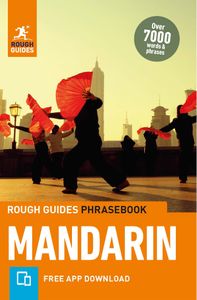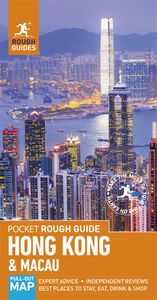The shopping is great in Shanghai, and it’s a rare visitor who doesn’t end up having to buy another bag to keep all their new goodies in. The Shanghainese love luxury goods, and it’s not uncommon to find young women spending several months’ salary on a handbag, but all those glitzy brand names that give the streets such a lot of their shine are not good value; high-end goods and international brands are generally twenty percent more expensive than they would be in the West. Ignore them, and instead plunge into the fascinating world of the backstreet boutiques and markets.
Made to measure
Getting tailored clothes is a recommended Shanghai experience, as it will cost so much less than at home and the artisans are skilled (provided you’re clear about exactly what you’re after) and quick. At the textile market in the Old City, near Liushui Lu at 399 Lujiabang Lu (南外滩轻纺面料市场, nánwàitān qīngfǎng miànliào shìchǎng; daily 10am–7pm), on-site tailors will make you a suit for around ¥500, including material (you’ll have to barter a bit), which will take a couple of days; a shirt should be around ¥150. It’s all a bit hit and miss, but Jennifer at Unit 237, Andy at 295 and Xia at 326 are all considered a good bet.
If you’re looking for a more sedate experience, or a tailored qipao, your best bet is to head to one of the dozen or so specialist tailors on Maoming Nan Lu, just south of Huaihai Lu. Three shirts in one of these stores should come to around ¥800, a suit will be around twice that.
Central Shanghai
A good place to get your bearings in Central Shanghai is at the Bund, on the west bank of the Huangpu River. To the north, across Suzhou Creek, is the area of the old Japanese Concession; while east over the Huangpu is Pudong, and the city’s most conspicuous architectural landmarks. Nanjing Lu, one of China’s busiest shopping streets, runs west from the Bund, to Renmin Park in the centre of the city, where you’ll find the excellent Shanghai Museum. South and west of the Bund, you’ll find the oval-shaped area corresponding to the Old City, the longest continuously inhabited part of Shanghai, with the Yu Yuan – a fully restored classical Chinese garden – and bazaars at its heart. To the southwest of here lies the marvellous former French Concession, with its cosmopolitan cooking traditions, chic European-style housing and revolutionary relics. The energetic eating and nightlife centre of Shanghai, Huaihai Lu, serves as the area’s main artery. Central Shanghai is pleasingly compact, and it’s not hard to find your way around on foot – though you’ll certainly need to use the subway or taxis to cross from one quarter to the next. Be aware that, with so many tourists about to prey on, this is a particularly bad area of the city for scams.
The Bund
Shanghai’s original signature skyline is the Bund, a strip of grand Neoclassical colonial edifices on the west bank of the Huangpu River, facing the flashy skyscrapers of Pudong on the opposite shore – a backdrop domestic visitors queue up against to have their picture taken. Named after an old Anglo-Indian term, “bunding” (the embanking of a muddy foreshore), the Bund’s official name is Zhongshan Lu, but it’s better known among locals as Wai Tan (literally “Outside Beach”). By whatever name, this was old Shanghai’s commercial heart, with the river on one side, the offices of the leading banks and trading houses on the other. During Shanghai’s riotous heyday it was also a hectic working harbour, where anything from tiny sailing junks to ocean-going freighters unloaded under the watch of British – and later American and Japanese – warships. Everything arrived here, from silk and tea to heavy industrial machinery. Amid it all, wealthy foreigners disembarked to pick their way to one of the grand hotels through crowds of beggars, hawkers, black marketeers, shoeshine boys, overladen coolies and even funeral parties – Chinese too poor to pay for the burial of relatives would launch the bodies into the river in boxes decked in paper flowers.
Great British drug dealers
Jardine Matheson, founded by William Jardine – the man who did more than any other individual to precipitate the Opium Wars and open Shanghai up to foreign trade – was the first foreign concern to buy land in Shanghai. Their former base (they lost all of their holdings in China after 1949), just north of the Peace Hotel, is now occupied by the China Textiles Export Corporation.
The wealth of the Sassoon family, too, was built on opium, but by the early years of the last century, the family fortune had mostly been sunk into Shanghai real estate, including the Cathay (originally known as Sassoon House). The flamboyant Victor Sassoon lived long enough to see his hotel virtually destroyed by the Japanese, including his rooftop private apartment, with 360-degree views and dark oak panelling (it has recently been restored), but also long enough to get most of his money away to the Bahamas.
Huangpu river tours
One highlight of a visit to Shanghai, and the easiest way to view the edifices of the Bund, is to take one of the Huangpu River tours (黄浦江旅游, huángpŭ jiāng lǚyóu). On the tour, you’re introduced to the vast amount of shipping that uses the port, and you’ll also be able to inspect all the paraphernalia of the shipping industry, from sampans and rusty old Panamanian-registered freighters to sparkling Chinese navy vessels. You’ll also get an idea of the colossal construction that is taking place on the eastern shore. Evening cruises offer spectacular views, as Shanghai is lit up like a pinball machine at night.
Cruises leave from Shiliupu Wharf at the south end of the Bund, opposite Jinling Dong Lu at 171 Zhongshan Nan Lu. You can buy tickets at the wharf or at the Bund Tourist Information Centre, beside the entrance to the Bund Tourist Tunnel. You can also book direct with one of the many cruise operators. You can book tickets a few days in advance over the phone and they will deliver to your hotel.
Departure times vary depending on season and weather. Ninety-minute long cruises (¥128) depart at least twice an hour daily between 11am and 9.30pm. Hour-long cruises (¥100) are rarer, usually hourly, and there is one daily three-hour cruise (¥150) at 2pm, which goes all the way to the mouth of the Yangzi and back. Cruises that include a buffet dinner run between 7pm and 9pm (¥200).
It is also possible to take half-hour cruises from Pudong. These leave from the Pearl Dock, every half hour between 10am and 1.30pm (¥100).
Tianzifang
Turning right from the end of Sinan Lu onto Taikang Lu (泰康路, tàikāng lù) will bring you to the latest fashionably artsy shopping and lunching quarter, Tianzifang. The unassuming entrance, an arch over alley 210 on the north side of the road, leads onto Taikang Art Street, a narrow north–south alleyway off which you’ll find an expanding web of alleys filling up with trendy boutiques, coffee shops, handmade jewellery stores, art galleries and restaurants, all housed in converted shikumen houses. At its northern end, Tianzifang exits onto Sinan Lu, but don’t even try to come in from there – the entrance is really tough to find.
Inevitably, Tianzifang gets compared with Xintiandi; but whereas the architecture there is modern pastiche, this is a set of real, warts-and-all longtangs, with the result that it’s quainter, shabbier, more charming. If you’re looking for an artsy knick- knack or accessory, quirky souvenir, tasteful homeware or a designer original, this is the place to come, though try to visit on a weekday as the narrow lanes get very crowded at weekends. For a coffee stop, central Kommune is a local institution.
Yu Yuan
A classical Chinese garden featuring pools, walkways, bridges and rockeries, the Yu Yuan was created in the sixteenth century by a high official in the imperial court in honour of his father. The Yu Yuan is less impressive than the gardens of nearby Suzhou, but given that it predates the relics of the International Settlement by some three hundred years, the Shanghainese are understandably proud of it. Despite fluctuating fortunes, the garden has surprisingly survived the passage of the centuries. It was spared from its greatest crisis – the Cultural Revolution – apparently because the anti-imperialist “Little Sword Society” had used it as their headquarters in 1853 during the Taiping Uprising.
North of Suzhou Creek
North across the Waibaidu Bridge from the Bund, you enter an area that, before the war, was the Japanese quarter of the International Settlement. The area immediately north of the bridge is tipped for a big renovation – you’ll see some flashy new buildings, such as the bulbous International Cruise Terminal, and many more are planned. For the moment, the obvious interest lies further north, in the Lu Xun Park area (also known as Hongkou Park) and its monuments to the political novelist Lu Xun, although the whole district is lively and architecturally interesting.
Western Shanghai
Due west from the city centre there is less to see, with a sprinkling of widely scattered sights, much too far apart to walk between. Moganshan Art District is worth a visit to experience the commercial side of China’s modern art movements; while the Longhua and Yufo temples are two of Shanghai’s most important surviving religious sites.
Moganshan Art District
Moganshan Arts District (or M50) is a complex of studios and galleries located in an old textile mill beside Suzhou Creek, just west of Shanghai train station. Attracted by cheap rents, artists took over the abandoned buildings in the 1990s and used them as studios; then the art galleries moved in, and now the design studios, cafés and arty shops are arriving. It’s an intriguing mix of shabby and sophisticated, jumbling together paint-spattered artists, pretentious fashionistas and baffled locals. Recently a glut of lame commercial galleries have opened, but there are enough good ones left, including those listed here. Many of the galleries are closed on Mondays, and there’s a map on the wall to the right of the entrance. When you’re arted out, have a coffee at the nearby Bandu café.
Moganshan’s galleries
New galleries tend to show insipid copies of the works of famous artists. Here are some established and worthwhile venues.
ShanghART
Buildings 16 and 18 (daily 10am–6pm; 021 63593923, shanghartgallery.com). One of the first galleries in China to show work by modern Chinese artists, now with a stable of more than forty and a reputation for exciting work.
Island 6 Art Centre
Building 6, first floor (daily 10am–7pm; 021 62277856, island6.org). This collective prides itself on its technological nous, and puts together lively multi-media shows.
M97
Second floor, 97 Moganshan Lu (Tues–Sun 10am–6pm; 021 62661597, m97gallery.com). The best photography gallery in the area – it’s over the road from the main M50 complex, but worth seeking out.
OV Gallery
Room 207, building 4 (Tues–Sun 11am–6pm; 021 54667768, ovgallery.com). Themed shows from up-and-coming artists, mostly Chinese.






















